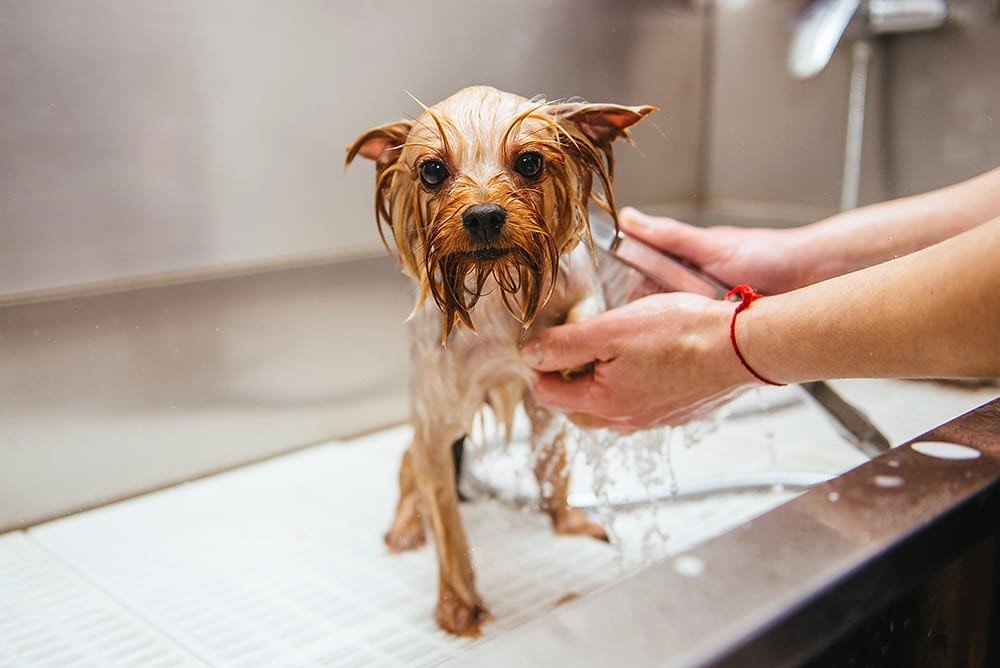Effective Tips for Grooming an Aggressive Dog: A Step-by-Step Guide
Grooming an aggressive dog can be a challenging task, but with the right approach and techniques, it is possible to make the experience less stressful for both you and your dog. This comprehensive guide will provide you with effective tips and strategies to groom your aggressive dog safely and successfully.
Understanding Aggression in Dogs
Before diving into grooming techniques, it is crucial to understand why some dogs exhibit aggressive behavior during grooming sessions. Aggression can stem from various factors, including:
- Fear or anxiety
- Past traumatic experiences
- Pain or discomfort
- Lack of socialization
- Territorial behavior
Recognizing the root cause of your dog's aggression can help you tailor your approach and create a more positive grooming experience.
Preparing for the Grooming Session
Create a Calm Environment
Setting the right atmosphere is essential when grooming an aggressive dog. Choose a quiet, comfortable space where your dog feels safe. Remove any potential triggers or distractions that might heighten their anxiety.
Gather Necessary Supplies
Before starting, ensure you have all the required grooming tools within reach. This may include:
- Brushes and combs suitable for your dog's coat type
- Dog-friendly shampoo and conditioner
- Towels
- Nail clippers
- Treats for positive reinforcement
Introduce Grooming Tools Gradually
Allow your dog to become familiar with the grooming tools before using them. Let them sniff and investigate the items, associating them with positive experiences through treats and praise.
Step-by-Step Grooming Guide

1. Start with Exercise
Before grooming, engage your dog in physical activity to help release pent-up energy and reduce anxiety. A tired dog is often more cooperative during grooming sessions.
2. Use Positive Reinforcement
Throughout the grooming process, reward your dog with treats, praise, and gentle petting for calm behavior. This helps create positive associations with grooming.
3. Begin with Gentle Touching
Start by simply touching your dog in areas they are comfortable with, gradually working your way to more sensitive areas. This helps build trust and desensitizes them to handling.
4. Brush Gently and Consistently
Use a brush appropriate for your dog's coat type and start with gentle, consistent strokes. Pay attention to your dog's body language and take breaks if they show signs of stress.
5. Bathing Techniques

If bathing is necessary, use lukewarm water and speak in a soothing voice throughout the process. Consider using a handheld shower attachment for better control and to minimize stress.
6. Drying and Detangling
Carefully towel dry your dog, avoiding vigorous rubbing that might startle them. Use a detangling spray if needed, working through knots gently with your fingers or a wide-toothed comb.
7. Nail Trimming
This can be particularly challenging for aggressive dogs. Start by simply touching your dog's paws and rewarding calm behavior. Gradually introduce the nail clippers, trimming just one nail at a time if necessary.
8. Ear Cleaning
Use a dog-specific ear cleaner and cotton balls to gently clean the outer part of the ear. Avoid inserting anything into the ear canal, as this can cause injury or discomfort.
Advanced Techniques for Aggressive Dogs
Muzzle Training
For severely aggressive dogs, muzzle training can be a safe and effective option. Introduce the muzzle gradually, associating it with positive experiences and treats.
Desensitization and Counterconditioning
These behavioral modification techniques involve gradually exposing your dog to grooming activities while pairing them with positive experiences. This process can help reduce fear and aggression over time.
Professional Help
If your dog's aggression is severe or you are uncomfortable handling the situation, consider seeking help from a professional dog trainer or behaviorist specializing in aggression.
Maintaining a Regular Grooming Routine

Consistency is key when grooming an aggressive dog. Establish a regular grooming schedule to help your dog become more accustomed to the process. Short, frequent sessions are often more effective than long, infrequent ones.
Safety Precautions
Always prioritize safety when grooming an aggressive dog:
- Use protective gear like gloves if necessary
- Have an escape route planned in case the situation escalates
- Never punish or yell at your dog during grooming
- Be prepared to stop if your dog becomes overly stressed or aggressive
FAQs
Q: How often should I groom my aggressive dog?
A: The frequency depends on your dog's coat type and overall health. Generally, aim for weekly brushing sessions and bathe every 4-8 weeks, unless otherwise advised by your veterinarian.
Q: Can I use sedatives to groom my aggressive dog?
A: Sedatives should only be used under veterinary supervision and as a last resort. It is better to work on behavioral modification techniques first.
Q: Is it safe to groom an aggressive dog at home?
A: With proper techniques and precautions, it can be safe to groom an aggressive dog at home. However, if you feel unsafe or uncomfortable, it is best to seek professional help.
Q: How long does it take for an aggressive dog to become comfortable with grooming?
A: The timeline varies for each dog. With consistent positive reinforcement and patience, you may see improvements in a few weeks to a few months.
Q: Can aggression during grooming be a sign of a medical issue?
A: Yes, sudden aggression or increased sensitivity during grooming can indicate underlying pain or discomfort. Consult your veterinarian if you notice any changes in your dog's behavior.
Conclusion
Grooming an aggressive dog requires patience, understanding, and a gentle approach. By following these steps and techniques, you can create a more positive grooming experience for both you and your canine companion. Remember, every dog is unique, so be prepared to adjust your approach based on your dog's individual needs and responses. With time and consistency, many aggressive dogs can learn to tolerate and even enjoy grooming sessions.
Top Pick-
Home Remedies to Relieve Dog Itching After Grooming
6 Popular Small Dog Breeds That Hardly Shed or Bark
Tips and Tricks to Manage Excessive Shedding in Your Female Dog







